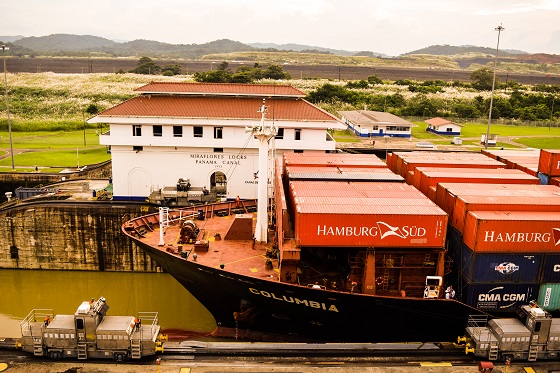We welcome Neil Hoskins from ManSys to our blog, who tells us how some very complex export documentation processes can be dealt with efficiently.

Crossing the Panama Canal
Selling overseas is difficult at the best of times, but getting your goods to their destination and getting paid is often more so. There are many complex procedures, parties and rules to adhere to. One particular area of complication is the documentation required to move your goods to their destination efficiently, communicating with all the parties involved; banks, forwarders, shipping lines, customs, governmental bodies and of course, your customer. Documentation differs depending on your target market, the products you sell, the shipping & payment terms you use and who you involve in the process. For some exports you may have to report after the event too, for example in Europe we have Intrastats, Export Sales Lists and other reports such as IPR (Inward Processing Relief). You need to know what declarations to use and if your goods are dual use, hazardous, food or alcoholic, for example, the complexity increases.
With the advent of Brexit we are unsure what documentation will be required to ship from and to the UK, although it would be easy to say “treat it like every other country outside the EU”, it’s doubtful that’ll actually happen. It’s more likely that more reporting will be required as well as, for example, special identifiers on existing documentation.
While Brexit seems to have opened up business for some companies, it’s going to be an obstacle for others. Those companies in the UK specialising in “exports” to the EU actually have it relatively easy, simply producing an invoice for payment similar to any domestic shipment. When Brexit eventually happens fully, which is looking like March 2019, they may have to produce other documents and reports and having the right systems in place to do this is critical. If extra reporting data is required, ensuring your systems can cope is a must and it’s almost a given that the big ERP vendors will be rubbing their hands already.
Actually, most ERP systems lack the functionality to produce the documents required to the international standards in place. This is where specialist software like ManSys comes in (see below *).
Solutions Director, Neil Hoskins, has over 25 years’ experience in helping companies involved in international trade. Initially, his aim was to move companies from typewriters and photocopier overlay systems onto well organised and flexible computer systems but as time moved on this has progressed to moving from document templates in word processing and spreadsheet software. He is never surprised by how laborious documentation is for companies and the ways they complete it. It’s not just about legal requirements either, he believes that the quality of your documentation should reflect your company image, professionalism and status – poor documentation will reflect badly on you and ultimately lose you business. Comprehensive, well-structured and high quality documentation should be easy to produce.
There are added benefits to using software to produce your documentation too; you can report on all the information, easily, for example knowing what volumes you’ve shipped with which forwarders can help you negotiate better rates. Tracking all the other documentation in one place is a necessity, effectively having an online filing cabinet for all your documentation whether you produce it or not keeps the wheels running smoothly.
* That’s because ManSys produces all the documents you require in print, via email or electronically and it can be configured to your specific needs, integrated with your existing ERP system and operated remotely. ManSys adopts the UN Aligned standard for export documentation but also allows users to tailor their document formats when required. Supporting complex Letters of Credit is essential and this is all built into ManSys. With users in over 30 countries, ManSys have a wealth of experience implementing their software in all sizes and types of companies, from single user to multi-user spread over multiple continents in every product sector.
